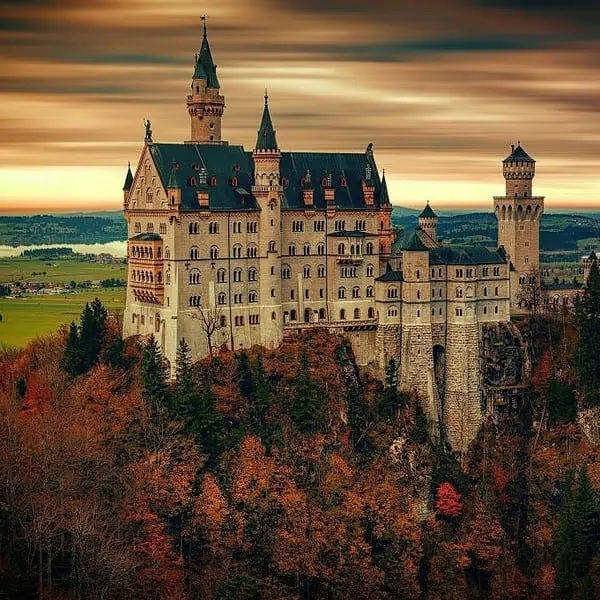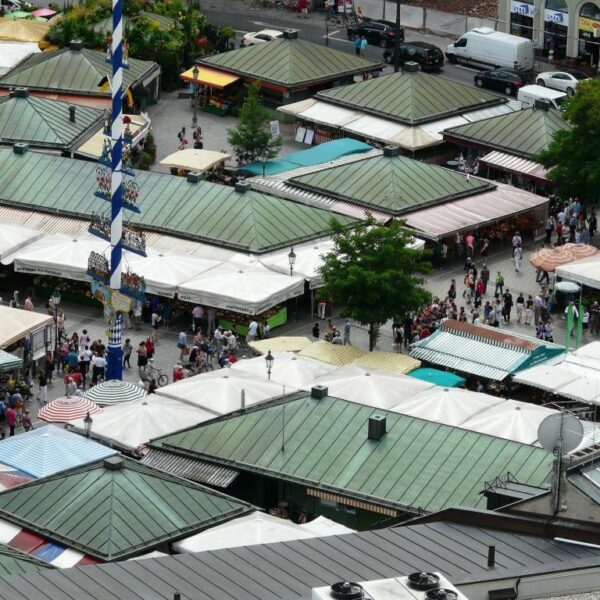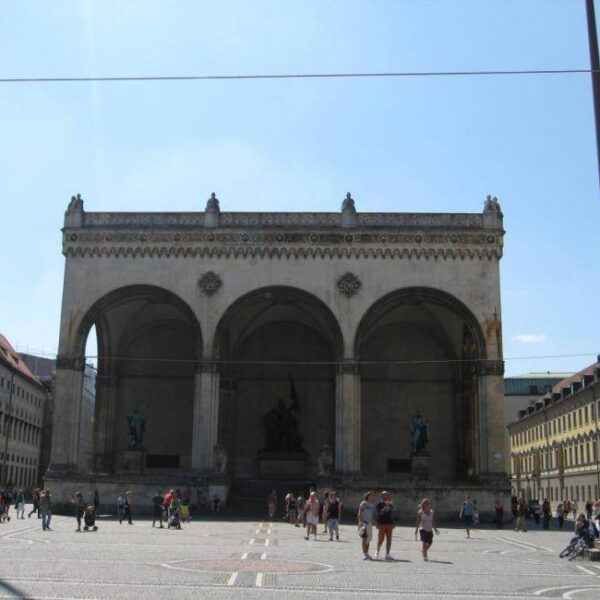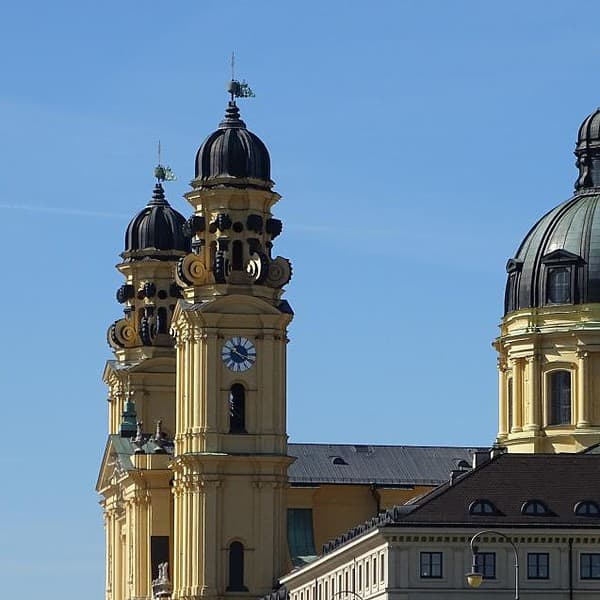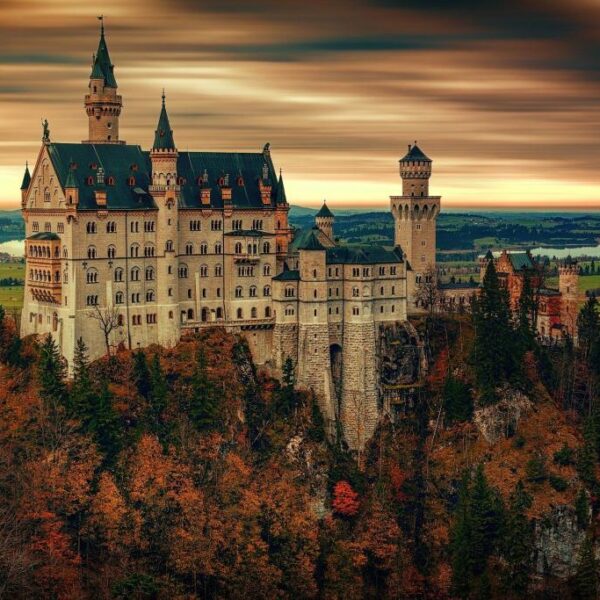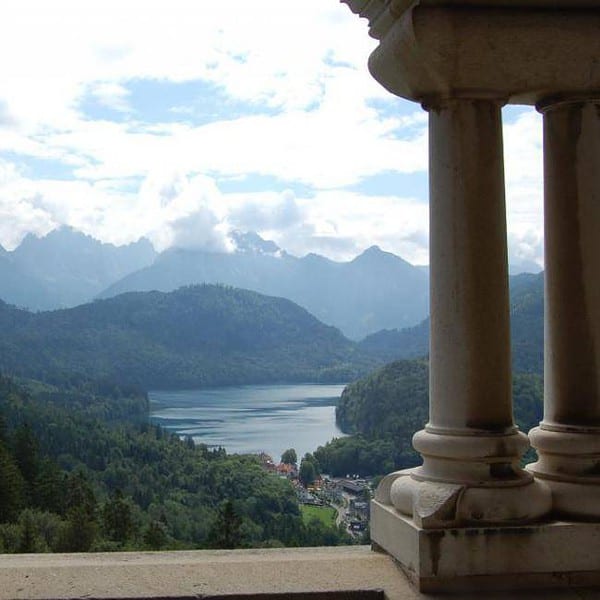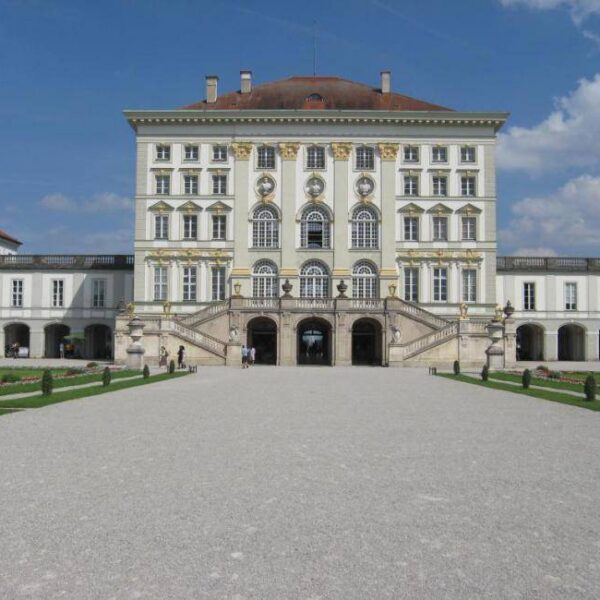I hope you enjoy my Top Ten Things to See and Do in Munich.
Remember, this list is a compilation of my personal favorites – there are hundreds of other sights, restaurants, tours and landmarks (like the Olympia park, which was very close to making it’s way onto this list) that you could choose to see.
It’s also important to remember that Munich is a city of festivals and depending on what time of year you come, you may want to check out seasonal festivals like Oktoberfest, or Tollwood, or a visit a Christmas Market if you arrive during the winter season. Munich.de is a great resource to keep you up to date on fun and exciting events and festivals taking place throughout the city all year round.
If, however, you are strapped for time with 1-3 days to spend in this amazing city (and trust the author) then I welcome you to adopt this itinerary and bathe in all wonder, history and tradition that Munich has to offer.
So, here it is! My most favorite things to do in Munich is:
#1. Take a tour of the Englischer Garten:
The Englischer Garten is an immense park found steps away from the city center (literally, steps). Trails wind their way through various sections of the garden, each informally categorized as the place to grille (BBQ), or tightrope walk, kick the ball around, or lay naked under the summer sun.
Yup! That’s totally legal here.
You’ll find streams, ponds, small waterfalls and even surfers catching the waves at the Eisbach, a man-made river that feeds into the Isar.
If you’re in Munich for more than a couple of days, the Englisher Garten is a great place to go jogging, forming a loop that can be followed all the way back to the Lugwigstrasse, so you can turn around at any point without getting too lost.
If you have limited time in Munich, reserve an afternoon (or at least part of it) for a picnic and stroll through the garden. Stop at the Chinesisicher Turm (Chinese Tower) for a beer, a pretzel and some Obatzda, a deliciously creamy, melt-in-your-mouth mixture of cheese, garnished with paprika, salt, pepper etc.
Stay long enough to hear some folk music being played by an Umpapa band dressed in lederhosen and dirndls and then move on to the next attraction.
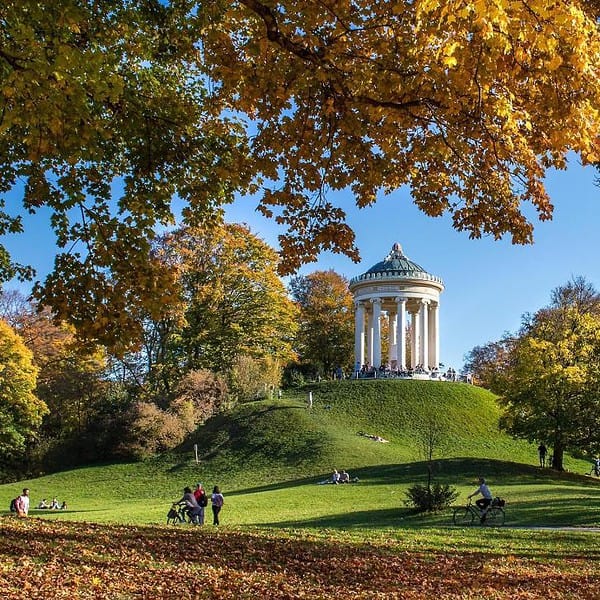
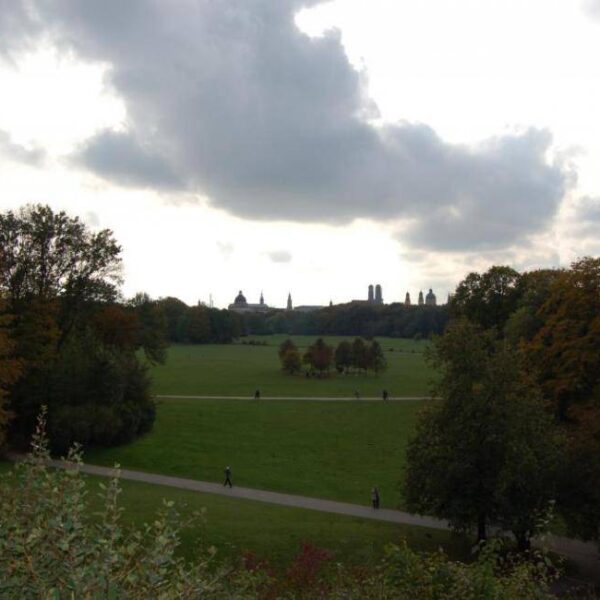
#2. Marienplatz, the Rathaus and the Glockenspiel:
Marienplatz is the centre of Munich, where all roads collide and from where you can venture outwards onto your next adventure.
In and around the Marienplatz are loads of things to see and do including the Rathaus, the town hall, on which one will find the Glockenspiel.
While it’s completely normal to walk through the Marienplatz, share a coffee with friends somewhere along the Kaufingerstrasse or stare in awe at the gothic style of the Rathaus built in 1908, watching the animation of the Glockenspiel is a pretty touristy thing to do. So, for ten minutes, just come to terms with being a tourist. This is the corniest thing you can possibly do in Munich and I got berated by my husband endlessly because I continued directing people to this little bit of kitsch (a word I learned in Munich which means tacky, tasteless, corny and otherwise passé.)
The Glockenspiel consists of life-sized figures that move in the same direction three times a day, accompanied, naturally, by folk music played by the chimes. The chimes go off at 11am, and then again at 12pm and 5pm during peak holiday season. At these times, the Glockenspiel comes to life, depicting the marriage of a Bavarian duke and a jousting match between Lothringen and Bavaria. Following the jousting match, the figures on the bottom half of the Glockenspiel begin the Schäfflertanz, a dance preformed by coopers during the plague to lift the spirits of residents.
Marienplatz, outside of the Glockenspiel, is a great place to meet up. Whether it’s for dinner at one of the many restaurants nearby like the Bayerischer Donisl or (a personal favourite) Zum Alte Markt, in preparation for a day of visiting nearby churches like the Peterskirche, or simply an emergency meeting point in case someone gets lost, Marienplatz is a great place to gather for any occasion.
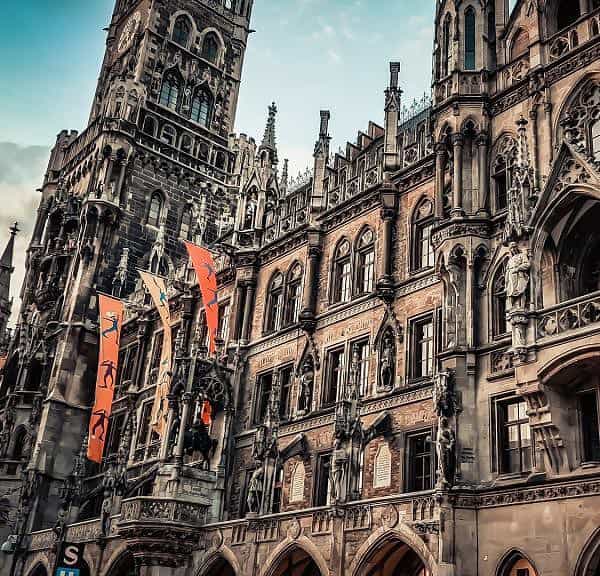
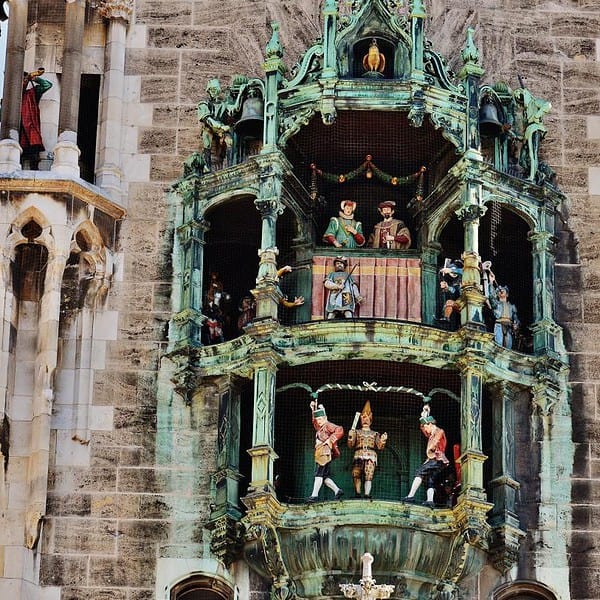
#3. Eat, Drink and Dance at the Hofbräuhaus:
The Hofbräuhaus is Munich’s oldest beer hall (literally the brewery of the royals) and is still the best way to experience the best and worst of Munich, all under one roof.
While you are guaranteed to run into a hoard of screaming tourists half in the bag after downing one too many Weissbier, you will also experience the gemütlichkeit (coziness) of sharing benches with strangers and raising a glass to old friends, new friends and other things you can’t understand but are glad to cheers to anyway.
Beer drinkers can choose from Hofbräu original, dark beer, wheat beer, Radler (beer and lemonade), or Russ’n (wheat beer and lemonade).
If you’re hungry enough at the Hofbräuhaus, try a traditional dish like Weisswurst; white sausages stuffed with veal/pork, served with sweet mustard and generally eaten before 12:00pm. If that doesn’t tickle your fancy, try Schweinshaxe, fried pork knuckle or a seasonal favourite among tourists and locals alike, Spargel, white asparagus drenched in hollandaise sauce, butter or served with speck. Most dishes come with Sauerkraut, Knudeln (dumplings), or Kartoffeln (potatoes).
Don’t expect a pretty little salad with veggies and calorie free dressing. I made the mistake of ordering salad during my first visit to Munich and all I got was the most confused look followed by a field of lettuce the size of my place mat. Never again.
Vegetarian? Don’t panic! If you’re starving but against the prospect of pig’s knuckle, enjoy a serving of Spätzle, the German equivalent to pasta. Spätzle is normally served with cheese or spices and can be integrated into just about anything.
Keep an eye out at the Hofbräuhaus for many a Lederhosen and Dirndl, traditional wear worn notably throughout Oktoberfest! These traditional costumes are seen daily in Munich as people often wear formal or casual forms of Lederhosen or Dirndls to every special occasion demanding an ounce of tradition.
When I lived in Munich, my husband and I would dress up in our costumes and head to the Hofbräuhaus, just for fun! While it’s merrier to singalong if you’re garbed in the traditional attire, you’ll be welcomed either way and wrapped into singing songs you don’t know while banging your fist on the table and stomping your feet to the rhytm of the Umpapa.
A night out at the Hofbräuhaus is a guaranteed good time. If you’re not having fun, it’s probably time to order your next beer!
Fun Fact:
A beer wench at the Hofbräuhaus ( or serving at the Oktoberfest) wears a wrist guard in order to protect against the strain of carrying what is, at times, more than 7 1litre beer steins at once! Wowza!
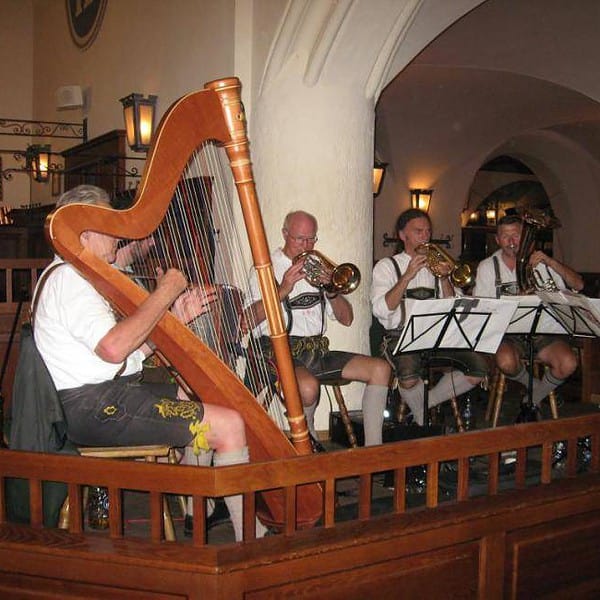
#4. Dance the night away at Cohibar:
Hands down, the best bar in Munich, Cohibar is the one place you should go for a night on the town.
A Cuban bar nestled on the side streets of the Maximilianstrasse, here you will find the best (and strongest) cocktails in the city.
Not only do the bartenders (who happen to be extremely good looking) flip bottles around like jugglers at a street fest, but the DJ plays music will have you on your feet the entire night.
You don’t have to be a pro to salsa with this crowd!
Just start moving and get into the swing of what is the club with the friendliest vibe in Munich. If you can’t decide what you feel like, ask the bartenders to concoct something using your favourite ingredients.
They will comply, and add a twist of their own to make you the most delicious thing you’ve ever had (I’ve been made a guava delight that will knock the leder right off the hosen).

#5. Take a Free Historical Walking Tour
When it comes to history, there is one thing you need to know. Munich is full of it, but it’s not easy to find.
Unlike some cities where memorials on display are nearly impossible to miss, Bavarians have chosen to pay tributes to the past in more subtle ways.
For example, behind Odeonsplatz is a pathway faintly outlined lightly in gold. Walking from Odeonsplatz to Mariensplatz, it would be easy to walk right over it without realizing that it was made famous by those who chose not to salute Nazi soldiers during the Second World War and who, in order to avoid doing so, went out of their way to take another route, the one marked in gold. Many people lost their lives after being identified as having taken a longer path in a silent rebellion.
How do I know this?
Thanks to the free walking tour offered by Sandeman’s New Europe Munich. These free tours leave from the Marienplatz daily at 10:45am and 1:00pm.
Guides working solely on commission will lead you through the inner city pointing out major hotspots as well as historical secrets spotted throughout the city. If you are strapped for time, this is a great way to get the lay of the land.
I recommend starting your trip with this tour and then deciding which spots demand more attention.
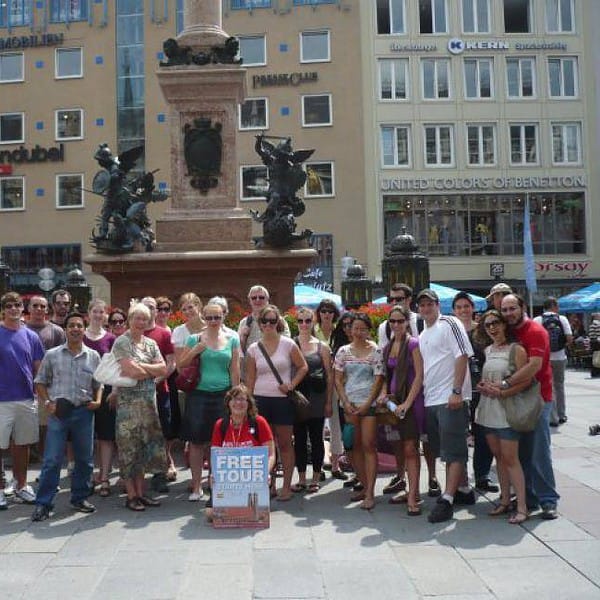
#6. Stroll the Viktualienmarkt:
The Viktualienmarkt is a great stop en route or post a visit to the Marienplatz.
Warning: it is absurdly expensive.
Not interested in dipping into your life savings for a loaf of bread? Don’t buy anything!
Just stroll between booths and gaze at the cheeses, crafts, fruits and vegetables offered by the many a merchant welcoming you to their stalls and handing out samples that will make it really hard not to empty the pockets, or the wallet.
Take in the little statues that can be spotted throughout the market, and sip from the free fountains gushing with clean water straight from the alps.
And if you’re tummy starts to rumble, try a Leberkäse, taken literally it means “liver cheese” but there’s nothing livery or cheesy about it.
Leberkäse is like the fast food of Munich and can be found just about anywhere, including the airport, the train station and, the Viktualienmarkt. Served on a bun with mustard (optional), it’s akin to North American meatloaf and is a great inexpensive way to cure the cravings when hunger strikes.
#9. Visit Dachau:
I’m always hesitant to recommend a visit to Dachau as a stop on any tourist trip to Munich, but the truth is, the remnants of Germany’s first concentration camp are important to see.
For many, including a large percentage of North Americans, it is the only way to fully grasp the atrocities that took place during a very dark period in German history.
The reason I hesitate in recommending this as a “must-see” for tourists is my empathy for the German people who have come so far in putting the horrors of World War Two behind them.
That in mind, a trip to Dachau can be a sobering experience well worth the visit.
Greeted at the doors by the famous sign reading Arbeit Macht Frei (work makes freedom), visitors can sign up for a guided walk around the camp, or you can take a slower tour at your own pace. Whether or not to sign up for a tour is really up to you.
For me personally, I needed to take my time wandering through the camp in order to come to terms with the emotions rising every time I took another step.
The incredible sadness that overwhelmed me when I set foot in the camp brought tears to my eyes more than once and I couldn’t stop thinking how lucky I was to live in a country that has never experienced this type of anguish, on either side of the gun.
Having visited the camp more than once, I have also experienced the guided tour and will definitely recommend it to anyone who wants a detailed explanation of a day in the life of a camp prisoner.
Fortunately, Dachau plays a short documentary at various intervals (and in various languages) throughout the day, so even if you miss the tour, you can get a feel for the timeline and a sense of the impact the camp had within the community itself. For example, during the liberation of the camp, neighbours were forced by English and American troops to enter the premises and witness the devastation that had got unpunished for so long. Nobody went untouched by the reign of the Nazi regime, including German citizens frightened for the lives of those they loved.
According to the camp website, in the twelve years between when the camp opened in 1933 and liberation by British and American forces, 41,500 (of the 200 000 who were imprisoned) were murdered.
When you walk around the camp, you will see bunkers and toilets used by former prisoners. You will also walk into rooms where people were systematically killed, tortured or hung until ready to enter the crematorium. Finally, you will see the barb wire fence that encircles the camp, the graves beyond the crematorium that mark the resting place of unknown victims and the wall where people were executed at close range.
Like I said, a trip to Dachau isn’t a heart lifting or happy experience and shouldn’t be portrayed as such. It is a place to go to pay your respects and learn from the mistakes of a shared history.
The camp is easy to get to by S-Bahn. Once you arrive at Dachau, a bus running frequently will take you straight to the camp.
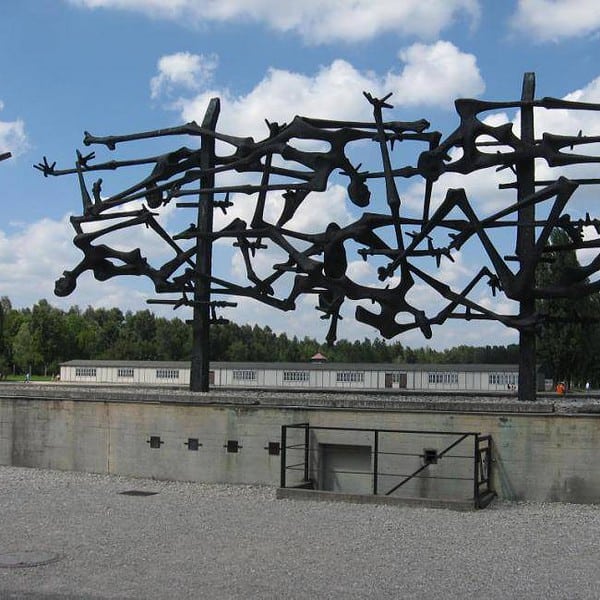
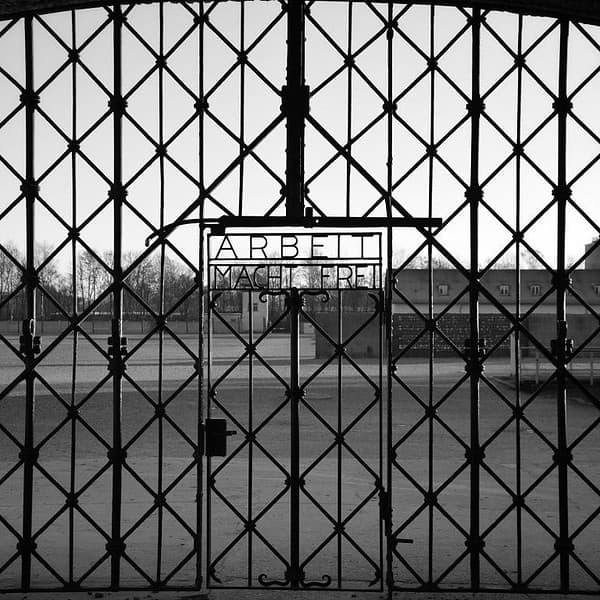
#10. Schloss Nymphenburg:
I would love to say that Schloss Nymphenburg is a step outside the hustle and bustle of Munich’s downtown core, but there’s really not enough hustle and bustle to require a break at all. Visiting the Schloss (which means palace) is, however, a wonderful way to spend an afternoon.
Built over the course of the 17th and 18th century, the palace design is very different from typical castles or palaces you might find in other parts of Europe, notably in France or the U.K. Schloss Nymphenburg is a massive complex, but appears, on the outside, to be quite modest in design, lacking extravagant detail but certainly holding its own as a noble-looking structure.
Credit: Source link

